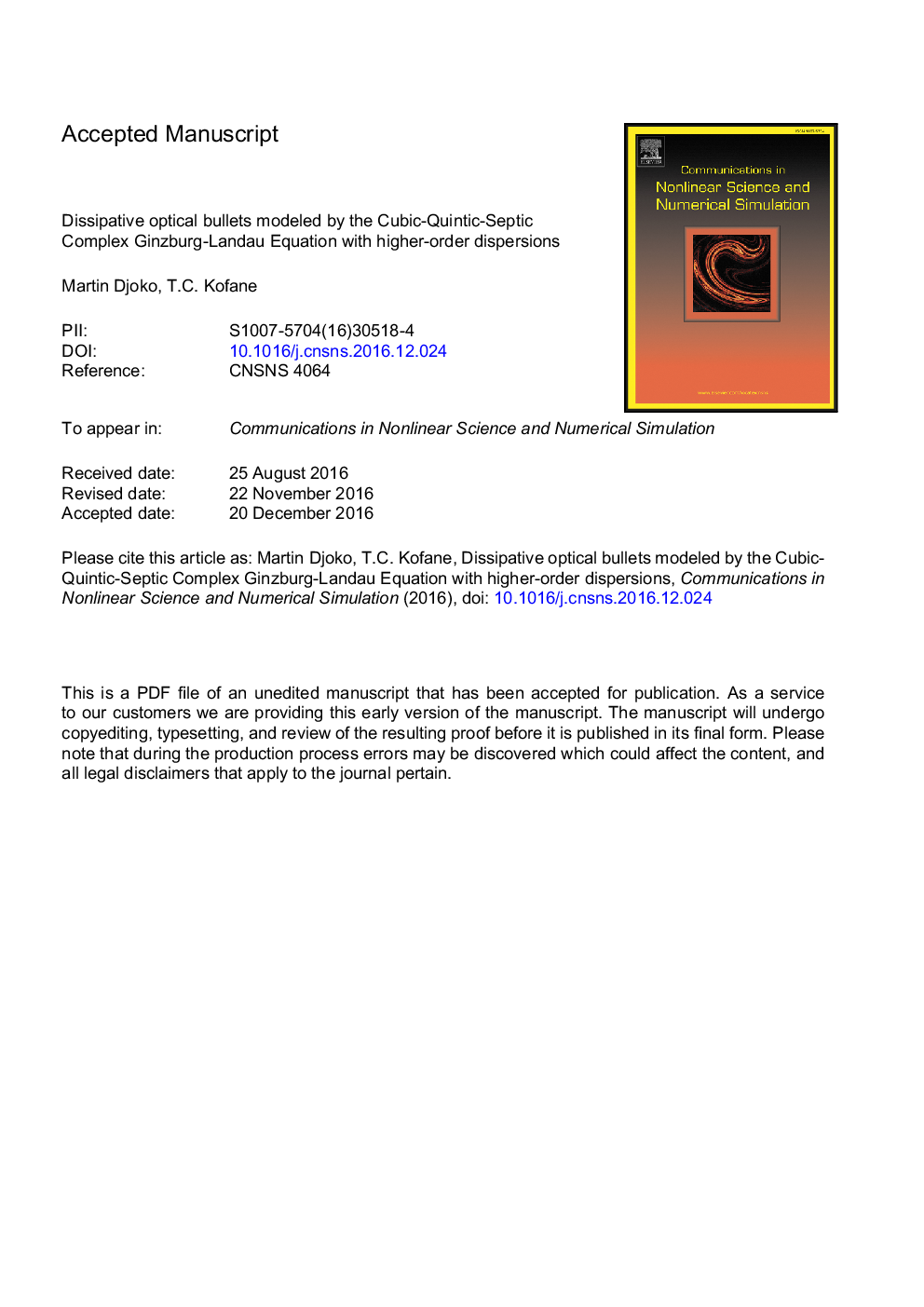| Article ID | Journal | Published Year | Pages | File Type |
|---|---|---|---|---|
| 5011623 | Communications in Nonlinear Science and Numerical Simulation | 2017 | 21 Pages |
Abstract
We investigate the propagation of dissipative optical bullets under the combined influence of dispersion, diffraction, gain, loss, spectral filtering, Raman effect and cubic-quintic-septic nonlinearities. Using the Maxwell equations, we derive a basic equation modeling the propagation of ultrashort optical solitons in optical fiber, named the higher-order (3+1)D cubic-quintic-septic complex Ginzburg-Landau [(3+1)D CQS-CGL] equation. Considering this higher-order (3+1)D CQS-CGL equation, we use a variational approach to obtain a set of differential equations characterizing the variation of the pulse parameters in fiber optic-links. The variational equations that we obtained are investigated numerically in order to observe the behavior of pulse parameters along the optical fiber. A fully direct numerical simulation of the higher-order (3+1)D CQS-CGL equation finally tests the results of the variational approach. A good agreement between analytical and numerical methods is observed. Among different behaviors, bell-shaped dissipative light bullets, double, triple and quadruple bullet complexes are obtained under certain parameter values for anomalous, zero and normal chromatic dispersion regimes.
Keywords
Related Topics
Physical Sciences and Engineering
Engineering
Mechanical Engineering
Authors
Martin Djoko, T.C. Kofane,
